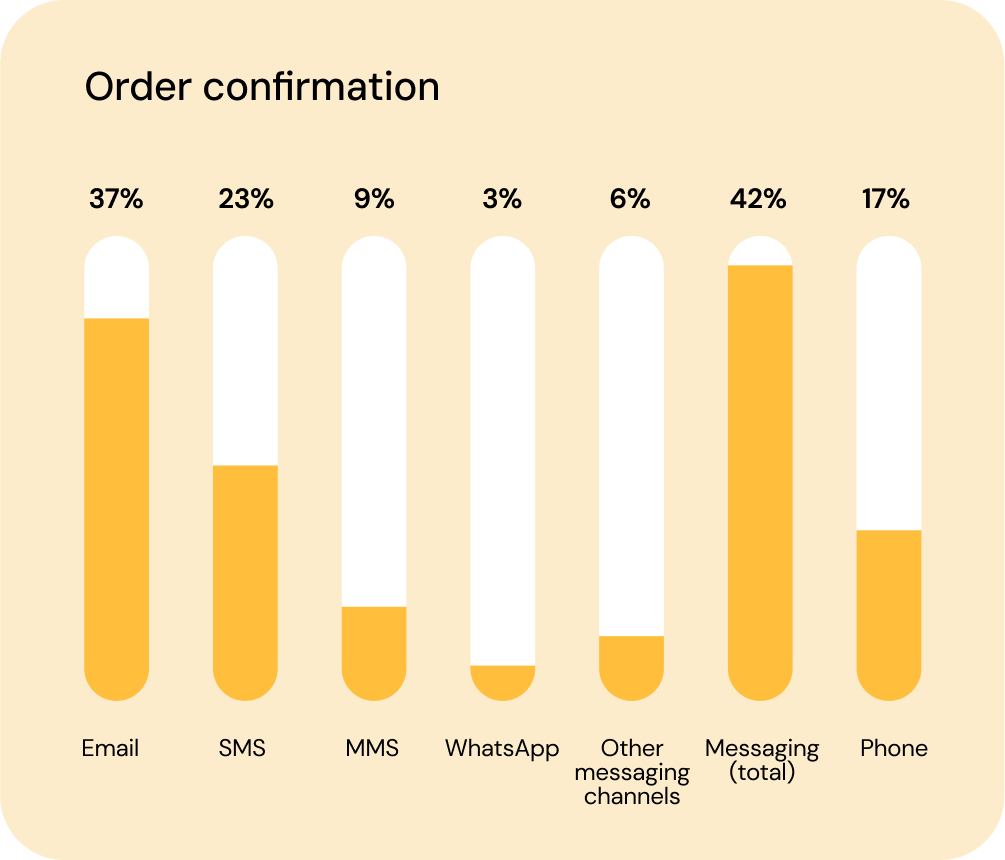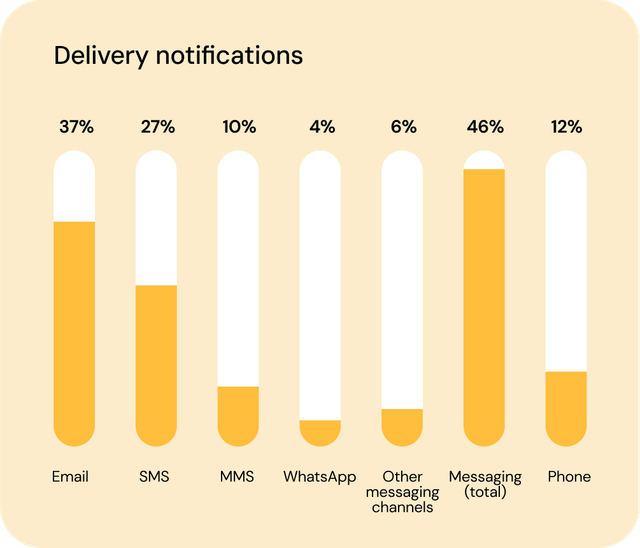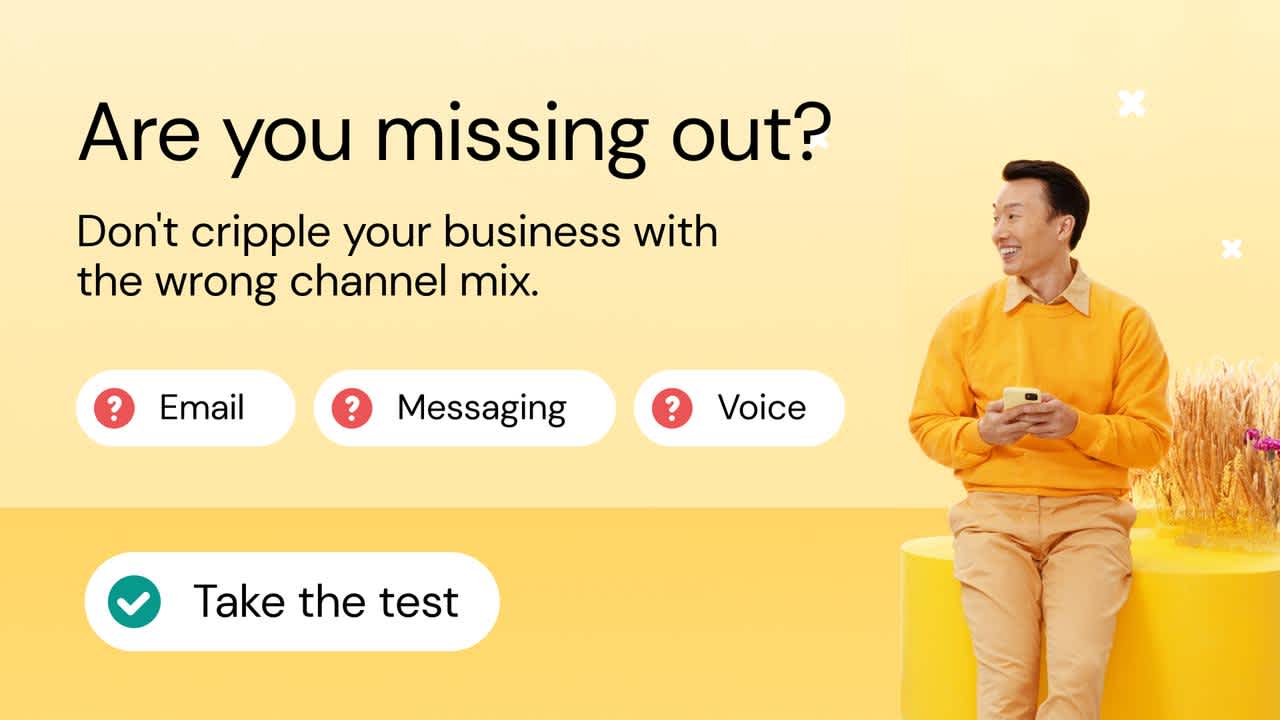Cover your bases with email and SMS for transactional messages
New consumer research reveals consumer preferences for customer communication. Spoiler alert: Email and SMS top the list for all use cases. But they may be most powerful when you provide both options for transactional messages.
PUBLISHED ON
Every hero needs a sidekick they can count on to help save the day. A solid sidekick always has the hero’s back, and many times, they also have skills that complement their partner’s strengths. Email and SMS are a lot like that – especially when it comes to delivering important transactional messages.
Here at Sinch Mailgun, we think transactional emails are unsung heroes of the customer experience. However, we also know that when you combine the powers of SMS and email you’ve got a dynamic duo of customer communication.
New research from Sinch proves this point. It includes survey results from hundreds of U.S. consumers and businesses. You can read all about it in the new report The art and heart of meaningful customer connections.
Table of contents
Order confirmations
Delivery notifications
Identity verification
Account activity and alerts
Holy transactional messages, Batman!
When we published our 2024 report, Email and the customer experience, survey results showed nearly 3 out of 4 consumers would choose email as a preferred channel for receiving transactional messages.
The team at Sinch dove even deeper into this topic. They asked consumers to pick their top channel for specific situations along the customer journey. Time and again, the two options consumers selected most often were email and SMS.
Ready to see for yourself? Quick, to the Inboxmobile!

Order confirmations
For B2C senders, the first type of transactional message that likely comes to mind is the order confirmation. When consumers place an order, an email and/or text message should arrive in their inboxes almost immediately. When these messages don’t show up, many consumers worry something is wrong.
Sinch’s research shows 37% of consumers would prefer emails for order confirmations while 23% would pick SMS. Combined, around 60% of consumers would choose either SMS or email for this kind of transactional message.

The research revealed similar preferences for receiving invoices and receipts. While SMS delivery has the advantage of being extremely fast, the email inbox makes it easy to archive and organize receipts for important purchases. Plus, when you partner with the right email sending platform, you can count on rapid-fire performance too.
Delivery notifications
Whether it’s a food delivery left on a doorstep or an important package that arrives while they're away, consumers want to know when their orders show up ASAP. That may be why SMS preferences among consumers took a jump from order to delivery.
Sinch’s survey found 27% of consumers want delivery notifications to come via text message while 37% are sticking with the email inbox.

Mailgun’s research on email habits found most consumers check their email multiple times per day. However, people tend to keep an even closer eye on their text messages. SMS has open rates above 90% and people tend to view new texts within the first five minutes of delivery.
Identity verification
Another common and very important type of transactional message involves verifying the identity of a user before they access their account for your application or website. Two-factor authentication (2FA) is part of daily life for digital consumers, but which channels do they prefer?
While one-third of consumers want verification codes sent to their email inboxes, SMS stays consistent with 26% saying they’d prefer a text. When email and SMS results are combined for verifications messages, they again account for nearly 60% of the total.

The device a consumer is using may dictate where they prefer to receive this kind of transactional message. For example, if someone’s shopping online with their smartphone, a text may be most convenient. But email may be better when shopping on a desktop device. It’s all about where it’s easiest to access, copy, and paste that code.
Account activity and alerts
Many businesses, such as financial institutions, use transactional messages to notify customers about potentially suspicious account activity. This is another situation where speed and reliable delivery are crucial.
While a quarter of the consumers Sinch surveyed want these alerts sent to them via SMS, 34% would choose an email notification.

Whether you’re a bank or sell t-shirts in an online store, protecting access to your customers’ accounts and personal data should be a top priority. That’s why alerting people on both channels may be the most helpful approach for delivering these transactional messages.
Why you need both SMS and email for transactional messages
The truth is, if you’re not already providing your customers with the option of hearing from you via email and SMS, you’re in the minority of most B2C companies.
In addition to the consumer survey, Sinch’s Customer Connections report includes insights from U.S. businesses. When asked how they reach customers, 92% of business respondents said they use email and 73% said they use SMS. No other channel comes close to these two.

The point here is that if you’ve been relying solely on email for transactional messaging, expanding into SMS is the next logical step. It’s the best way to have all your bases covered for customer communications.
It’s also worth noting that you could combine survey results for MMS to SMS and make an even more compelling case for the importance of text messaging in customer communication. These two are essentially the same channel – just different protocols. The main differences between SMS and MMS include the ability to send images and a higher character count limit for MMS. But they’re all text messages to the consumer.
We could go back and forth about the advantages of email over SMS or why text messages have an edge over emails – but what’s the point? Your goal shouldn’t be to pick one channel to rule them all. You need to find the right channel mix to support an ideal customer experience.
Whether it’s an email promotion or a chatbot on the company website, in the end, it’s all about convenience. When you explore the full Customer Connections report from Sinch, you’ll see that making things convenient for them is the right way for a B2C brand to make a good impression on consumers.
Choose your communication channels wisely
Here’s yet another eye-opening finding from Sinch’s research. When you include other mobile messaging channels with MMS and SMS preferences, they go head-to-head with email in nearly every scenario.
Email is an irreplaceable part of the fabric of digital communication and it’s not going anywhere anytime soon (and we’re not just saying that because we’re email geeks. Still, it’s important to keep an open mind regarding new ways to effectively reach people if you want to build an experience that connects your company with the right people.
Email and SMS preferences depend on a lot of different factors, everything from age to geography.
Let’s say your business is expanding into new markets internationally. While WhatsApp is gaining steam in the U.S., it’s already very popular in other parts of the world. Should it be part of your communication strategy?
You may also want to consider the age of your audience. Research from Sinch SimpleTexting found that Gen-Z is the generation most likely to want to hear from brands via social media and text messaging, but they’re the least likely to want emails. Keep that in mind if you’re targeting a younger crowd.
Start sending SMS with Sinch Mailgun
An SMS to email gateway is a smart way to leverage the strengths of both email and SMS, especially when it comes to enhancing your engagement and meeting consumers where they are. Providing the right information at the right time to your customers means understanding how consumers interact with these channels in general.
We’ve shown you our research-based statistics, but every organization is different, and nothing is more valuable than the real metrics you accumulate by setting up this gateway.
Learn more about how to set up your own SMS to email gateway in our blog in partnership with Sinch MessageMedia.
Get some insights into the ideal channels for your needs. Take a free evaluation from Sinch and get a personalized report with suggestions for filling customer communication gaps.






